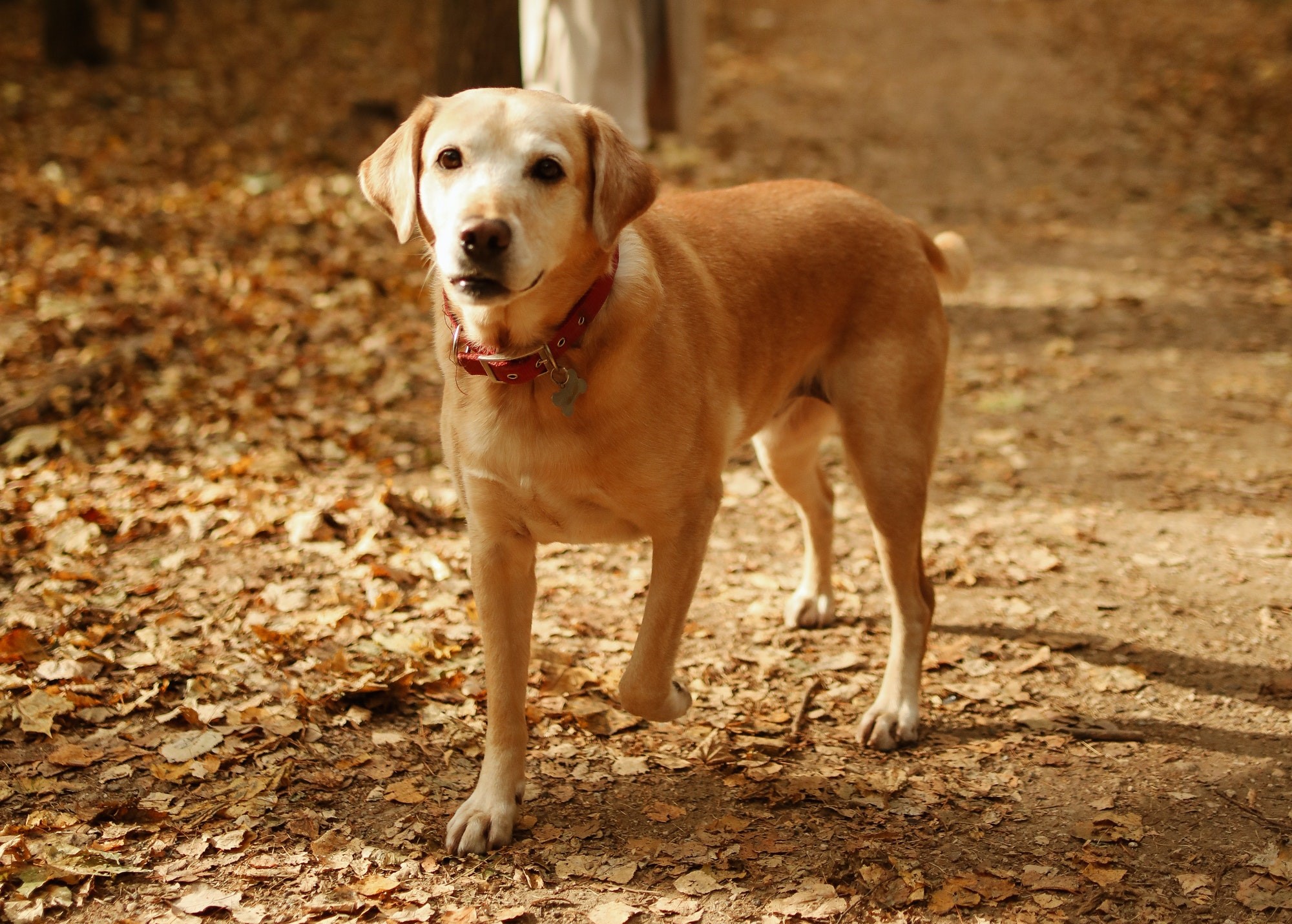What is osteoarthritis?
Osteoathritis is the most common cause of chronic pain in dogs. It can affect around 80% of dogs over 8 years of age. If left untreated it is considered a welfare concern. Arthritis means inflammation of the joints, but it is more complex than that. The cartilage in the affected joint is destroyed and not replaced. Then the lining of the joint capsule becomes inflamed and thickened. The joint fluid thins and loses its support for normal motion. Due to all this new bone is laid down around the joint and supporting structures such as ligaments weaken leaving the joint weakened and unstable. This all leads to pain which left unchecked will magnify in a process called “wind up pain”. Arthritis is not curable and will progress with time.
WHat are the signs of arthritis?
Arthritis causes chronic pain, which is often harder to identify than acute pain that will cause your dog to yelp or whimper. Dogs in chronic pain will rarely cry or wimper. Arthritis often affects more than just one joint so those affected can look more stiff rather than have an obvious limp. Common signs of arthritis include: slowing down on walks, hesitating when jumping, stiffness – especially after rest, sleeping more, changes in temperament, difficulty getting comfortable, changes in posture, becoming more reactive to people or other dogs, panting and loss of appetite.
Management options
There are many different ways to manage arthritis to give your dog the best quality of life possible. The ideal thing is to combine many management options together as one option alone is often not enough.
1. Weight management
About 63% of dogs are overweight. This puts more pressure on the joints but has been shown in humans to increase inflammation in the body. Weight loss of just 6% has been shown to have a significant impact on the pain or arthritis and will slow its progression.
2. Home environment adaptions
Reduce slippery floors, avoid stairs if possible, use ramps or half steps for big steps or to get on sofa or bed, remove trip hazards and use soft padded bedding in a warm draft free area.
3. Modified exercise
Stop high intensity games with balls and replace with mentally stimulating games such as hide-and-seek balls. Exercise should be little and often. Three 20 minute walks are better than one 1 hour walk. Avoid difficult terrain. Stop when your dog starts showing signs of struggle and go home, some days this will be sooner than others.

4. Diet and nutrition
The most important diet is one that allows your dog to maintain an ideal body weight. Hills JD diet has been shown to reduce signs of arthritis and reduce drug doses when used.
5. Supplements
We recommend Yumove Advance supplements as these have a proven benefit in arthritis. It contains green lipped muscle extract which has been shown to be effective in reducing clinical signs of arthritis.
6. Complementary therapies
Physiotherapy, massage therapy and hydrotherapy can help to relieve pain, improve physical activity and improve quality of life and should be performed by trained professionals.
7. Pain relief medication
The main medications used are nonsteroidal anti-inflammatory drugs; these can dramatically improve quality of life and mobility. Although there are further options if needed. It later cases multiple pain relief drugs are often used together to manage clinical signs.
If your dog or cat is showing signs of arthritis or are already on treatment and seem to be struggling more then please book an appointment for examination with one of our vets by calling 01702 545558.

